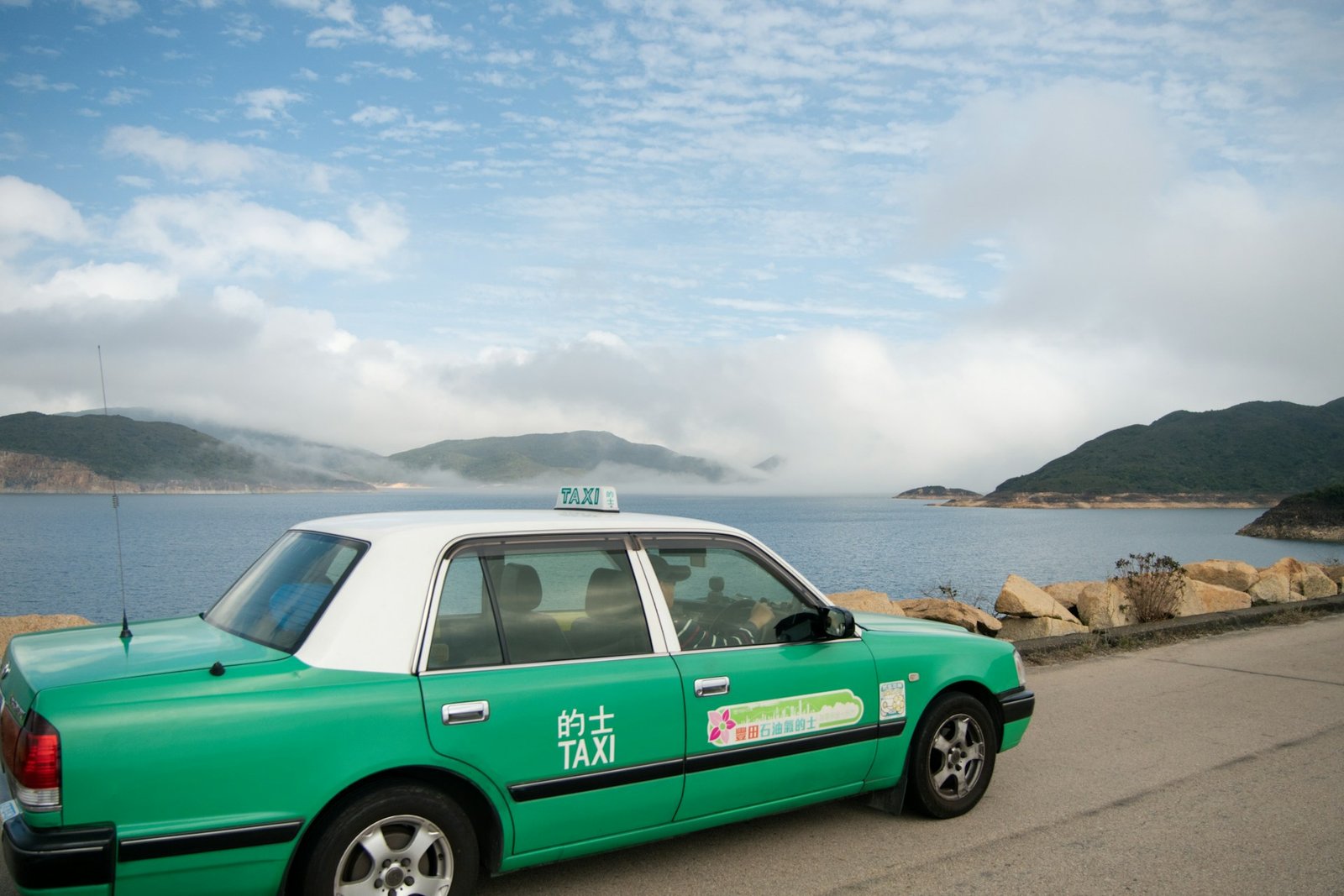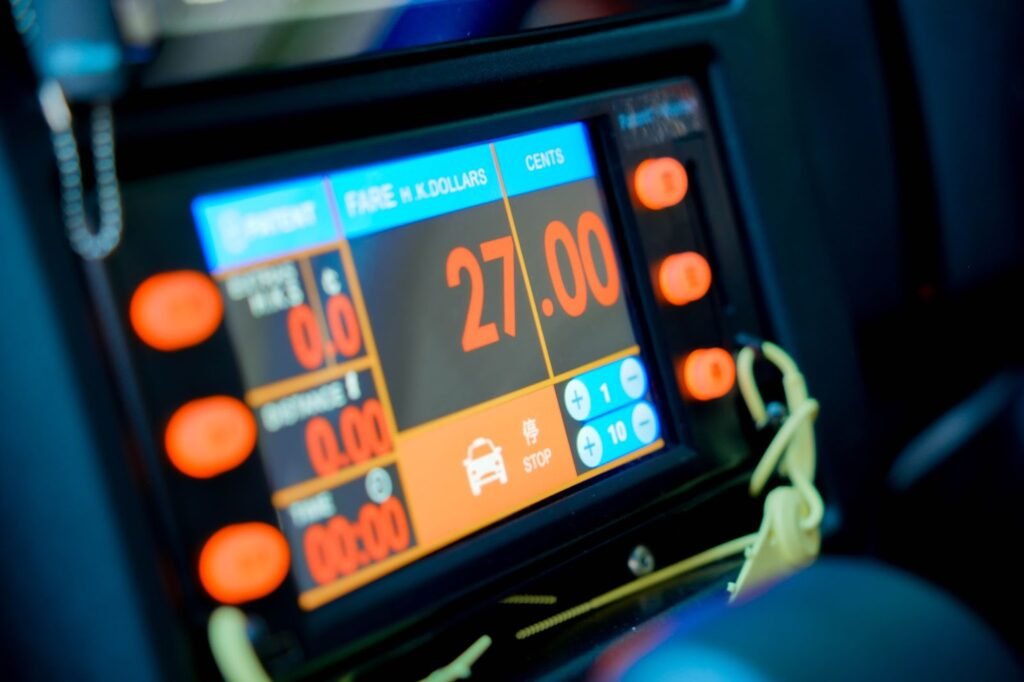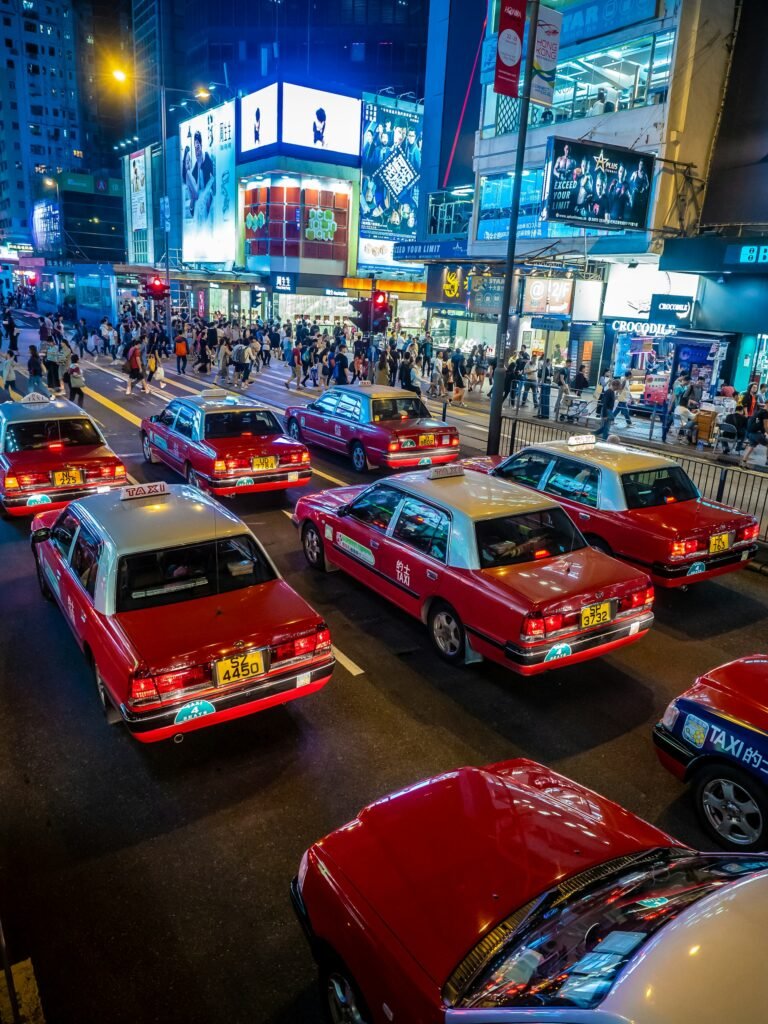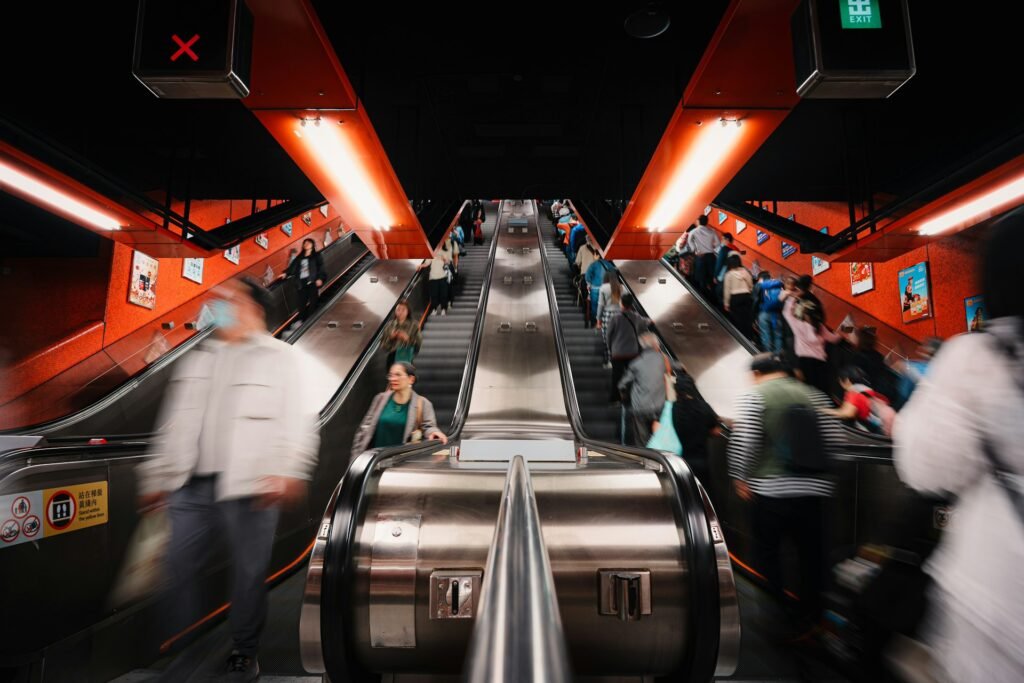The Complete Guide to Taxis and Ride-Hailing in Hong Kong
Hong Kong operates one of the world’s most comprehensive taxi systems, serving 1.1 million passengers daily across 18,163 licensed vehicles. The landscape is rapidly evolving in 2024-2025 with new premium taxi fleets, expanded digital payment options, and pending ride-hailing regulations that will reshape urban transportation. Whether you’re a tourist navigating the city for the first time, an expat settling in, or a local seeking insider tips, this guide provides everything you need to master Hong Kong’s complex transportation ecosystem.
Table of Contents


Understanding Hong Kong’s three-tier taxi system
Hong Kong’s taxi system divides into three distinct types based on coverage areas, each with its own color coding and fare structure.
Red taxis dominate the urban landscape with 15,250 vehicles serving Hong Kong Island, Kowloon, and most New Territories areas. These urban workhorses handle the majority of trips but cannot access Tung Chung Road or South Lantau Island roads.
Green taxis serve the New Territories with 2,838 vehicles covering areas north of Sha Tin and Tsuen Wan, including Tuen Mun, Yuen Long, Tai Po, and most of Sai Kung. They’re restricted from Hong Kong Island and Kowloon, making them essential for suburban travel.
Blue Lantau taxis are the smallest fleet with just 75 vehicles exclusively serving Lantau Island and Chek Lap Kok.
All three taxi types can serve Hong Kong International Airport, Disneyland, and the Hong Kong-Zhuhai-Macao Bridge port, making these venues universal access points regardless of your final destination.
Current pricing and fare structure
Hong Kong implemented significant fare increases in July 2024, with base fares now starting at HK$29 for red taxis, HK$25.50 for green taxis, and HK$24 for blue taxis for the first two kilometers. Subsequent charges apply every 200 meters or minute of waiting: HK$2.10 for red taxis, HK$1.90 for green and blue taxis, with reduced rates after longer distances.
Additional charges include HK$6 per piece of large baggage (exceeding 140cm combined dimensions), HK$5 for pets, and HK$5 for phone bookings. Cross-harbor tunnel tolls add HK$25 plus the toll amount, making airport trips to Central cost approximately HK$330-380 including tolls.
These increases, averaging 8-10% across taxi types, reflect Hong Kong’s response to rising operating costs and driver income pressures. Taxi license values have dropped from HK$7.25 million in 2015 to HK$4 million in 2024, indicating market challenges that fare adjustments aim to address.
Revolutionary changes: premium taxi fleets arrive
2024-2025 marks a watershed moment with the introduction of 3,500 premium taxis across five new fleet operators: Joie, SynCab, Amigo, Big Boss, and Big Bee. These fleets, comprising nearly 20% of Hong Kong’s total taxi supply, feature mandatory electronic payments, GPS tracking, dashcams, and mobile app booking.
The premium fleets include 1,900+ electric vehicles, positioning Hong Kong as a leader in sustainable urban transport. Fleet taxis must be maximum three years old when joining and cannot exceed ten years during service, ensuring consistently modern vehicles with air conditioning, WiFi, USB charging, and multilingual services.
SynCab leads the premium transformation with 425 hybrid vehicles offering wheelchair accessibility, while Joie’s bright orange taxis launched in March 2025 with 800 vehicles. These services represent Hong Kong’s most significant taxi industry evolution in decades.

Mastering payment methods and booking options
The payment landscape has transformed dramatically, with 70% of taxi drivers now registered for digital payments through Octopus mobile POS systems. Cash remains king for traditional taxis, but travelers now have unprecedented options including Octopus cards, UnionPay QR codes, Alipay, WeChat Pay, and PayMe by HSBC.
Premium fleet taxis mandate multiple electronic payment methods, accepting Visa, Mastercard, and all major digital wallets. The Octopus platform offers zero transaction fees for drivers through 2025, accelerating adoption and making digital payments more accessible to tourists carrying international cards.
Street hailing remains the primary booking method, with taxis displaying illuminated “TAXI” or “For Hire” signs available for pickup. Avoid the challenging 3:45-4:15 PM shift change period when finding available taxis becomes extremely difficult. Phone booking is available 24/7 at (852) 8109-2222 with a HK$5 surcharge, though mobile apps increasingly dominate advance bookings.
Navigating the ride-hailing landscape
Hong Kong’s ride-hailing sector operates in a complex regulatory environment, with most services technically illegal but widely tolerated. Uber dominates with over 216,000 registered drivers serving 3.6 million passengers, offering both legal Uber Taxi services and controversial UberX private car services.
HKTaxi shut down in April 2025, migrating users to Uber’s platform and consolidating the market. TADA emerged as a new competitor in December 2024, offering zero-commission rides with HK$8-9 booking fees and coverage limited to Hong Kong Island, Kowloon, and the airport.
DiDi provides cross-border services to mainland China cities, making it valuable for travelers continuing to Shenzhen or Guangzhou. The service integrates WeChat Pay and offers 24/7 customer service, though requires Chinese phone numbers for full functionality.
The government plans comprehensive ride-hailing regulation by 2025, potentially legalizing the industry while establishing licensing requirements and safety standards. Penalties for illegal operations increased to HK$25,000 fines and one-year imprisonment, though enforcement remains inconsistent.
Cultural etiquette and communication essentials
Respect and patience define successful taxi interactions in Hong Kong’s high-stress urban environment. Drivers work 12-hour shifts in challenging conditions, making courtesy essential for positive experiences. Always sit in the back seat, board from the left side, and wear seat belts as required by law.
Language barriers are common with older drivers, making essential Cantonese phrases invaluable: “你好” (nei hou) for hello, “唔該” (mm goi) for please/thank you, “停車” (ting che) to stop, and “打錶” (da biu) to request meter use. Carry destination addresses in traditional Chinese characters and use translation apps for complex communications.
Never attempt fare negotiations as all legitimate taxis use government-regulated meters. Avoid political discussions, respect dashboard decorations (often religious or personal items), and don’t slam doors. Tipping isn’t expected, though rounding up to the nearest HK$5-10 for convenience is common practice.
Airport and cross-border transportation
Hong Kong International Airport offers dedicated taxi stands located near the left-hand ramp outside the Arrivals Hall, with separate queues for red, green, and blue taxis. Service operates 24/7 with typical 5-10 minute waits, making taxis highly convenient for airport transfers.
Regular Hong Kong taxis cannot cross borders to mainland China, requiring multi-stage journeys or specialized cross-border limousine services costing HK$800-1,200 for airport-to-Shenzhen transfers. Border crossing points include 24-hour Huanggang Port and Shenzhen Bay Port (6:30 AM-midnight).
Alternative cross-border options include direct ferries from HKIA SkyPier to Shenzhen ports (30-50 minutes, HK$280-400) or taking taxis to border crossings then switching to mainland transport. Advance booking is recommended for cross-border services, particularly during peak travel periods.
Accessibility and specialized services
Wheelchair accessibility remains limited but improving, with Diamond Cab offering 12+ barrier-free taxis bookable at (852) 2760-8771. Toyota Noah Welcabs accommodate two wheelchair users plus carers, with point-to-point service starting at HK$145 and hourly rentals at HK$360.
SynCab provides the largest accessible fleet through its (852) 3700-6500 hotline, offering eMPT (e-Multi-Purpose Taxi) vehicles with 140cm height limits and 200kg weight capacity. 24-48 hour advance booking is essential for reliable wheelchair-accessible service.
Hong Kong International Airport provides free wheelchair assistance through airlines or paid ALLWAYS service at (852) 2275-0000.
Safety tips and avoiding common issues
Hong Kong taxis are extensively regulated with mandatory driver ID displays and government oversight ensuring safety standards. Always verify the meter starts at base fare and request receipts (legally required). Note license plate numbers for complaint purposes using the 24-hour hotline (852) 2889-9999.
Common issues include selective service during short trips or challenging destinations, though reporting egregious behavior helps maintain standards. Route manipulation is rare due to heavy regulation, but learn basic routes to major destinations for peace of mind. Weather significantly affects availability, with taxi supply dropping dramatically during rain or typhoon warnings.
Avoid peak shift change times (3:30 – 4:15 pm), use hotel concierge services during high-demand periods, and maintain backup transportation plans using the MTR system for reliability during rush hours. Trust your instincts and keep emergency contacts readily available including police (999) and transport complaints.
Conclusion: navigating Hong Kong’s transportation revolution
Hong Kong’s taxi and ride-hailing landscape is experiencing unprecedented transformation in 2024-2025, with premium fleets, digital payment expansion, and regulatory modernization reshaping urban mobility. The introduction of 3,500 premium taxis with mandatory electronic payments and environmental standards represents the industry’s most significant evolution in decades.
Smart travelers leverage multiple options: traditional metered taxis for reliability, premium fleets for enhanced service, ride-hailing apps for convenience, and public transport for peak-hour efficiency. Cultural sensitivity, language preparation, and advance planning remain essential for optimal experiences.
The pending regulatory framework will likely legalize ride-hailing services while ensuring fair competition and safety standards, creating a more integrated and user-friendly transportation ecosystem. Whether you’re navigating as a tourist, settling as an expat, or optimizing as a local, Hong Kong’s evolving taxi landscape offers increasingly sophisticated options for every journey across this dynamic city.



